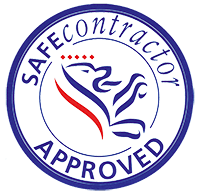It’s that time of year again, one of the busiest for heating engineers, when people start to turn their heating on after having been off for the summer months. We get more calls at this time of year than any other – even at the height of winter!
That’s because many find that when they turn the heating on, after their boiler has only been asked to provide hot water for many months, things don’t quite work as they hoped and there is no heat to be had.
If this happens to you, don’t despair. In many cases it could be something simple that you can easily remedy yourself. We have therefore put together a troubleshooting guide to work through to see if you can resolve the issue without having to call an engineer out.
The thermostat regulates the temperature in your home. You set it to a desired temperature and when it falls below that in the room, the thermostat instructs the boiler to heat the room up via the radiators. If you have turned the heating on and the boiler appears to be working but you’re not getting heat, it could just be that it’s not cold enough in the room in relation to the temperature set. Turn the temperature up on the thermostat and see if that works.
As well as regulating heat, thermostats control when the heating comes on. Most people have their timer set to turn the heating on in the morning when they get up, and in the evening when they’re home from work or school. If you have put the heating on to timer outside of the hours set, it won’t come on until it reaches the right time. Try putting it on to constant, which simply turns on without any constraint of time.
As well as temperature being determined by the thermostat, it can be controlled on a room by room basis using the valves on the radiators themselves. If the radiator valves are turned off, or set too low, the heating won’t come on. If some radiators come on and some don’t, this could be why. Check the valves on any radiator that isn’t coming on and turn on or up where necessary.
If you have a remote thermostat (a portable thermostat that connects by radio signal rather than wires) it will regulate temperature based on the temperature of the space it is located in. If it is in a small room that is naturally warmer than other areas of the home (eg if it’s in direct sunlight or close to an oven or tumble dryer) then this may not be representative of the temperature of the rest of the house. Move it to a different area, ideally a common living area where you spend the most time (and therefore wish to regulate most accurately).
Remote thermostats are powered by batteries. If it’s failing to connect to the boiler it could simply be that its batteries are low. Try changing them and see if this helps.
As mentioned above, remote thermostats connect to the boiler via radio signal. They usually have a range of around 30-50m but this can be affected by physical barriers, such as walls or furniture, or even by interference from other technology including routers and smart devices such as TVs and home hubs. Don’t necessarily position it next to the boiler, as this space could be warmer than the rest of the house and affect how it regulates the temperature, but move it closer and see if this makes a difference.
It could just be that the thermostat has lost its connection to the boiler. Check the manufacturer’s instructions (these are often available online if you can’t find your documents) and reset it. It’s amazing what can be resolved by simply turning it off and then on again!
Just as resetting the thermostat can help, equally the issue could be with the boiler itself so try resetting that.
If your radiators feel warm at the bottom but cold at the top it could be due to air locks inside them. Try bleeding the radiators to release the air. Even if they’re not coming on at all, this is still worth trying.
If none of the above have worked, or you find you have a more complex problem such as only downstairs radiators coming on or the boiler showing an error code, or making a strange noise, then you have exhausted your quick fixes and now is the time to turn to an expert and call in a Gas Safe Registered engineer.
Complete the form below and one of the Plumbcare.com team will get back to you as soon as possible.





